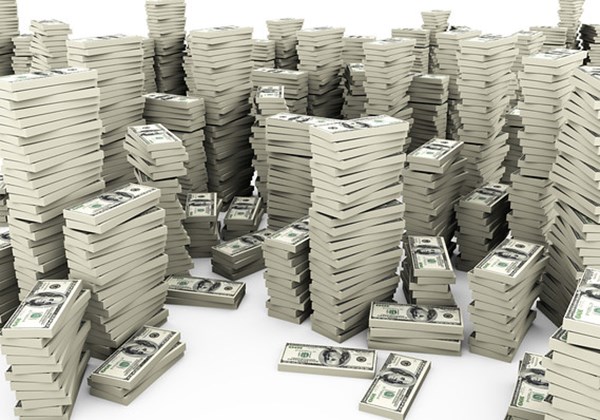Russia’s foreign currency purchases reach record levels
The Russian Ministry of Finance continues to increase the volume of the operations to buy currency on the market after receiving additional oil and gas income into the budget .
Between February 7 and March 8, the government will funnel 298.1 billion rubles into currency interventions on the Moscow Exchange, the Finance Ministry reported on Monday.
The volume of currency purchases has increased by as much as 18% compared to January, and will be an all-time record for the operations which began a year ago.
Every day the Finance Ministry will sell 15.7 billion rubles, which will enable it to buy 277 million US dollars per day at current exchange rates.
For two months, the federal budget will spend 555 billion rubles buying baskets of dollars, euros and pound sterlings, which is more than is allocated to healthcare for a year (525 billion rubles).
In annual terms, the currency operations will be the treasury’s second largest expenditure item: as the Finance Ministry reported in December, with oil at more than $60 per barrel, 2.8 trillion rubles will be allocated to them – as much to national defense.
The sharp growth in interventions compared to last year will ruin the ruble’s chances of strengthening significantly, despite the three-year record oil price, the UBS warns. In the first quarter, the Finance Ministry may buy more than in it did in the whole of 2017 (0.8 trillion rubles).
If the volume of interventions does not change in March, the Finance Ministry will take three quarters of the free currency off the market, according to Raiffeisenbank’s calculations. According to its prediction, the surplus of the account for the first quarter is roughly $20 billion, of which almost $15 billion will be purchased by the government.
Beginning in the second quarter, the pressure on the ruble may increase, analyst Mikhail Poddubsky from Promsvyazbank warns: at the start of the year the inflow of currency is seasonally at its peak, and in summer the balance of payments deteriorates – currency leaves the country due to dividend payments, imports and the population’s overseas holidays.
According to Finam analyst Sergey Drozov, exporters of raw materials will continue to benefit from the Finance Ministry’s operations, which will effectively prevent the ruble from strengthening. In ruble terms, oil is currently more expensive than at the start of the 2010s (more than 3,850 per barrel).
A weak ruble will also help the federal budget’s revenue to increase, and to reduce the loans on the market, Central Bank explained in the December monetary and credit policy report. “The growth of the actual US dollar exchange rate by one ruble with respect to the predicted level will make it possible to reduce the Federal Loan Obligations placement to 80-85 billion rubles,” the document states.
